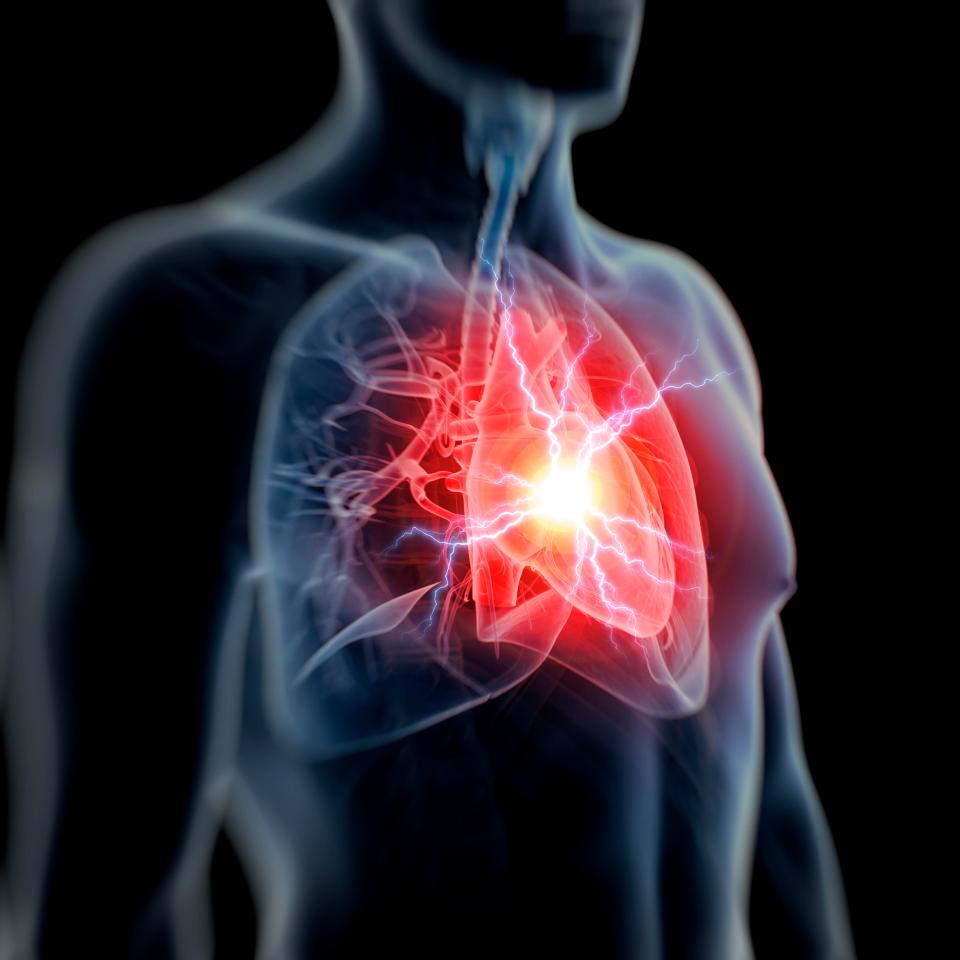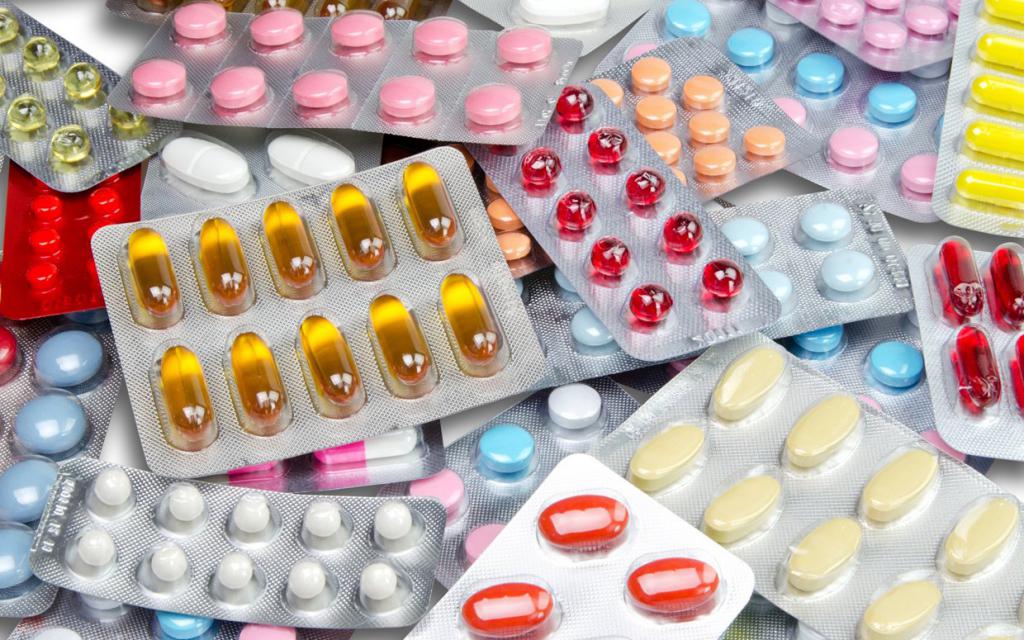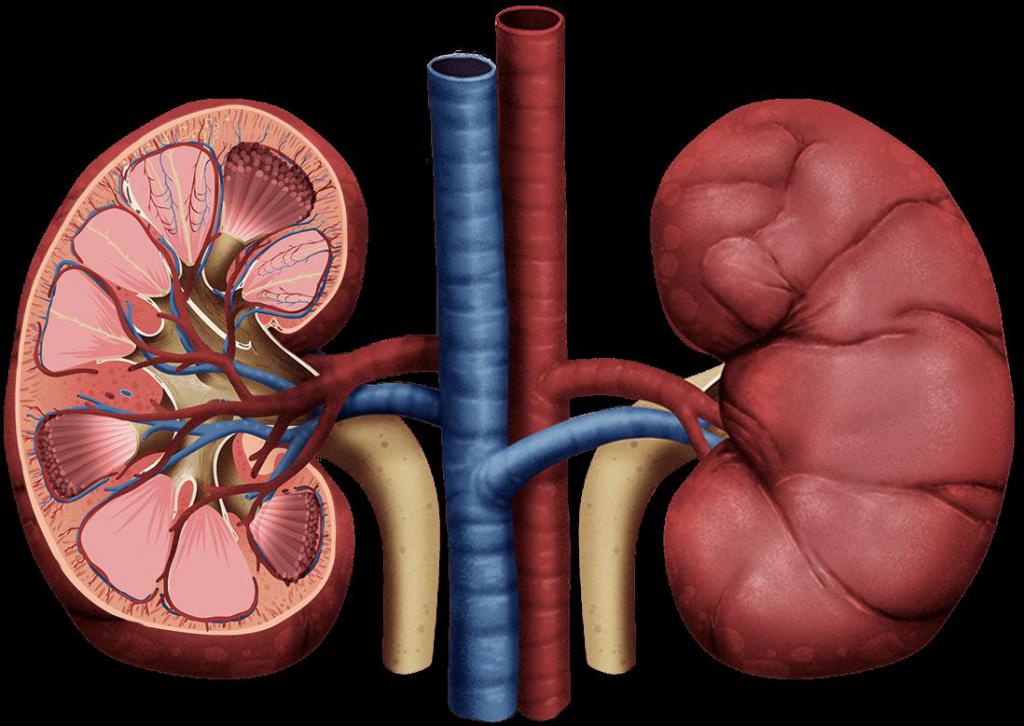Many people have high blood pressure (BP). This symptom signals hypertension. In almost 90% of patients, this is an independent disease. It is associated with a violation of cerebral regulation of vascular tone. In all other cases, hypertension appears as a result of a disease of some organ. In this case, it is called symptomatic, or secondary, hypertension.
What triggers hypertension?
There are many pathologies that cause it. For the convenience of diagnosing pathology, the classification of symptomatic arterial hypertension according to the diseases that provoke it is accepted:
- Renal - occurs with narrowing of the renal artery. The following conditions contribute to this: a thrombus, inflammation, hematomas, tumors, injuries, congenital arterial dysplasia, pyelonephritis, glomerulonephritis.
- Neurogenic - develops as a result of a malfunction of the brain caused by trauma, stroke or the appearance of a neoplasm.
- Endocrine - appears due to diseases of the endocrine system: hyperthyroidism, pheochromocytoma, thyrotoxicosis.
- Toxic - this type of symptomatic hypertension occurs when the body is poisoned with toxic substances: alcohol, tyramine, lead, thallium.
- Hemodynamic - begins with the occurrence of pathologies of the cardiovascular system: atherosclerosis, valvular heart disease, heart failure.
- Medicinal - is formed when taking certain medications: contraceptives, stimulants of the nervous system, non-steroidal drugs.
- Stressful - begins after severe psychoemotional shocks caused by burn lesions, large-scale surgical operations.

To provide complete assistance before the appointment of a course of treatment, the cause of high blood pressure is established. To eliminate secondary hypertension, the use of antihypertensive drugs is not enough, therapy of the underlying disease is necessary.
Severity classification
According to the severity of the course and depending on the magnitude of left ventricular hypertrophy and changes in the fundus vessels, the following types of symptomatic hypertension exist:
- Transient - a slight increase in pressure. It provokes: stress, a sedentary lifestyle, being overweight, excess salt intake, bad habits. In this case, there is no increase in the left ventricle and changes in the fundus. With timely treatment, the problem disappears.
- Labile - a periodic increase in pressure. To reduce the use of medications. Hypertrophy of the left ventricle and a slight narrowing of the vessels of the inner surface of the eyeball are possible. Sudden pressure surges can occur.
- Stable - constantly increased pressure. It occurs with pathologies of the vessels of the fundus and an increase in the left ventricular myocardium.
- Malignant - steadily high pressure, poorly reduced by drugs. There is a high risk of strokes and heart attacks, as well as complications associated with the fundus.
This classification of symptomatic hypertension is not complete. Not one disease can lead to hypertension, but their combinations, for example, aortic atherosclerosis and a kidney tumor. In addition, chronic pulmonary diseases in which there is an increase in pressure do not participate in the classification.
Symptoms that distinguish symptomatic from spontaneous hypertension
To determine the correct course of therapy should first determine the type of hypertension. If a patient has problems with kidneys, neurological disorders, endocrine disruptions or diseases associated with the cardiovascular system, it can be assumed that the pressure rises due to the development of symptomatic arterial hypertension. Often, the underlying disease occurs with mild signs or does not manifest them at all. Presumably, secondary hypertension can be determined by the following symptoms:
- unexpectedly and stably elevated blood pressure;
- a large or, conversely, a small difference between indicators of diastolic and systolic pressure;
- rapid progression of signs of hypertension;
- malignant course of the disease;
- patient age - symptomatic hypertension develops in young people or people over fifty years of age;
- there is no effect of taking antihypertensive drugs;
- panic crises.
Based on these signs, one can only assume the presence of secondary hypertension. To clarify the type, it is necessary to diagnose the disease.
Causes of Secondary Hypertension
Depending on the presence of a disease causing an increase in pressure, the causes of symptomatic hypertension are as follows:
- Kidney disease - impaired blood circulation in the kidneys, accumulation of fluid in the body, narrowing of the arteries. In inflammatory processes and circulatory disorders, increased renin production occurs, which leads to an increase in blood pressure.
- Endocrine diseases - violation of the adrenal gland, thyroid gland, pituitary gland. With these diseases, the production of hormones increases, which causes hypertension.
- CNS diseases - injuries, increased intracranial pressure, brain tumors, encephalitis. Insufficient blood supply increases the increase in blood pressure, which contributes to the occurrence of symptomatic hypertension.
- Ailments of the cardiovascular system - heart failure, acquired and congenital malformations, aortic lesions. Violation of the heart and blood vessels leads to increased pressure.
- Uncontrolled medication - antidepressants, glucocorticoids, oral contraceptives containing estrogens.
Often, secondary hypertension affects people who are prone to regular consumption of alcoholic beverages. Chronic alcoholism is one of the causes of symptomatic hypertension.
Symptoms of Secondary Hypertension
The main symptom of secondary hypertension is high blood pressure, and signs of the underlying disease join it. The patient most often complains of:
- noise and ringing in the ears;
- heart rate
- occasional dizziness and headaches;
- discomfort and pain in the heart;
- the appearance of black flies before the eyes;
- pain in the occipital part of the head;
- swelling of the lower extremities;
- constant fatigue;
- the occurrence of nausea, sometimes vomiting;
- increased sweating;
- repeated from time to time fever;
- bloated or lethargic after increased pressure.
With the initial development, secondary symptomatic hypertension may not manifest itself in any way. She will be expressed by a slight malaise, which many take for fatigue. In fact, it indicates the development of a serious disease, which must be treated as quickly as possible. When examining a patient with a doctor, vascular changes in the fundus, hypertrophy of the left ventricle, or an increase in the second tone of the pulmonary artery can be detected. An individual with a chronic disease must know the symptoms of secondary hypertension in order to protect himself from complications.
Dif diagnosis of hypertension and symptomatic hypertension
To diagnose the disease, the following standard procedures are carried out:
- Conversation with the patient - to collect an anamnesis, the doctor listens to complaints, reveals information about previous illnesses, hereditary predisposition, injuries.
- Inspection - the presence of swelling of the limbs and face is determined, the thyroid gland is palpated.
- Measurement of blood pressure. The patient is recommended to keep a diary where he will record the readings of pressure measurements.
- A general analysis of urine is prescribed - a violation of the water-electrolyte balance, the presence of an inflammatory process is determined.
- General and biochemical blood analysis - helps to detect various diseases of the internal organs.
- Blood test for hormones - shows the level of hormones for determining endocrine and hemodynamic disorders.
- CT scan - performed to detect the state of blood vessels, tumors, various changes in organs.
- ECG - will help determine changes in the work of the heart muscle.
- Dopplerography - used to assess vascular blood flow.
- Angiography - makes it possible to detect vasoconstriction, the appearance of blood clots and atherosclerotic plaques.
If in doubt about the diagnosis of the patient are hospitalized for additional procedures and medical supervision.
Disease treatment
The treatment of symptomatic hypertension is to eliminate the cause, which contributes to an increase in blood pressure. In all cases, a comprehensive long-term therapy is carried out, focused on the underlying disease and measures to reduce pressure. Treatment is carried out by two methods. With atherosclerosis of the renal arteries, the most effective treatment method is surgery. Often, stenting or balloon angioplasty is used for this. As well as surgically resolving the issue of eliminating defects of the mitral valve of the heart. Radical surgery for symptomatic hypertension is indispensable for various neoplasms in the kidneys, endocrine glands, and brain.
With medical treatment, the patient will need:
- Selection of drugs, given the etiology of the underlying disease. In each case, they are prescribed by a doctor, taking into account all the characteristics of the body.
- Antihypertensive therapy. For this, calcium channel inhibitors, diuretics, beta-blockers, antihypertensive drugs, ACE inhibitors are used.
- Nutrition correction. Patients are advised to consume more plant and milk food, to introduce porridge into the diet. Refuse smoked, salted, canned and fatty foods. Proper nutrition will help reduce the severity and frequency of jumps in blood pressure.
- Lifestyle change. To stabilize the pressure and prevent dangerous complications, doctors advise to reduce weight, increase time for active rest, and abandon bad habits. All these measures contribute to the improvement of oxygen metabolism in the tissues and the strengthening of the vascular system, and hence the normalization of pressure.

Properly selected treatment for a certain type of symptomatic arterial hypertension and patient care, especially in the elderly, significantly reduces or completely eliminates hypertension and facilitates the course of the underlying disease. When choosing therapy, the doctor takes into account the specific disease that caused the increase in pressure, the severity of symptoms of hypertension, the individual characteristics of the patient and his age.
Renal hypertension
According to medical statistics, it is believed that most of the cases of secondary hypertension are due to pathologies associated with kidney diseases. These include acquired or congenital pathologies of the structure of the kidneys and their arteries. The severity of the disease depends on the speed of blockage of the renal vessels. At the beginning of the development of renal pathology, the patient pressure does not change.

Symptomatic renal hypertension begins to manifest itself when the tissues of the organ are already significantly affected. The disease is especially dangerous for patients who have been diagnosed with pyelonephritis. Inflammatory processes in the renal pelvis pose a significant risk of high blood pressure. Another infectious kidney disease called glomerulonephritis also causes secondary hypertension. It is noted that renal hypertension is often found in young people who are inattentive to their health. Symptomatic arterial hypertension in infectious diseases of the kidneys often has a malignant course.
Hypertension in children
With arterial hypertension, an increase in blood pressure in children can be persistent or manifest itself in the form of crises. Children of the first years of life rarely suffer from this ailment. More often it develops in adolescents as a secondary sign of another disease, during puberty. This is due to the restructuring of the body, passing with hormonal and autonomic failures. The occurrence of childhood and adolescent hypertension depends on the age and pathologies of the internal organs. Most often in age groups, hypertension is caused by the following reasons:
- In infants - narrowing and blood clots in the renal arteries, congenital defects in the structure of the kidneys, lungs, heart defects.
- Preschoolers have inflammatory processes in the tissues of the kidneys, narrowing of the aorta and renal vessels, a Wilms malignant tumor.
- Schoolchildren under the age of 10 years have kidney inflammation, structural kidney disease.
- In children over the age of ten - primary arterial hypertension, inflammation of the renal parenchyma.
There are other anomalies that cause an increase in pressure:
- endocrine diseases;
- systemic vasculitis;
- brain pathology;
- connective tissue diseases;
- uncontrolled medication.
In the absence of the above reasons, a primary hypertension is diagnosed, symptomatic hypertension - otherwise. The causes of primary hypertension in a child may be:
- increased weight;
- heredity;
- constant emotional stress;
- temperament;
- excessive salt intake.
The clinical picture of pediatric secondary hypertension
Moderate hypertension is characterized by the absence of clinical manifestations, so parents and the child may not be aware of the occurrence of the disease. Complaints of fatigue, headache and irritability are usually attributed to the child’s age characteristics and a large learning load. A thorough examination reveals vegetative dysfunctions, abnormalities in the structure of the kidneys or heart. The child's well-being worsens and becomes stable with a pronounced form of hypertension. He begins dizziness, rapid heartbeat, pain in the heart appears, memory decreases. At the doctor’s appointment, tachycardia, left ventricular hypertrophy, constriction of the blood vessels of the fiber are detected.
The malignant appearance of symptomatic arterial hypertension and the care of a sick child requires special attention of parents. The pressure can take on high values, and the ongoing therapeutic measures have little effectiveness. In this case, there is a high lethal outcome. The following complications are characteristic of a hypertensive crisis:
- Acute hypertonic encephalopathy, accompanied by visual impairment, headache, nausea, vomiting, convulsions, impaired consciousness.
- Left ventricular failure with pain in the heart, shortness of breath, pulmonary edema.
- Renal failure with the release of a large amount of protein, the appearance in the urine of blood, a decrease in the amount of urine excreted.
Symptomatic hypertension in children must be diagnosed in the early stages to avoid irreversible effects.
Disease prevention
Preventive measures to prevent secondary hypertension include the following:
- Follow the rules of a healthy diet. This measure prevents the appearance of excess weight and provides the body with useful substances. It is necessary to increase the use of seafood, citrus fruits, dried fruits, honey, herbs, reduce fats of animal origin, contributing to an increase in cholesterol and blockage of blood vessels. For cooking, use only low-fat varieties. In the diet, increase the amount of foods rich in potassium, reduce salt intake.
- Periodically apply vitamin-mineral complexes.
- Constantly engage in physical exercise and sports. A feasible load helps strengthen the vascular system.
- Stop smoking.
- Avoid stressful situations. Observe the regimen of the day: sleep at least eight hours, take walks daily.
In addition to these recommendations, do not abuse alcohol. Overweight people must follow a special diet. To strengthen the nervous system, use products containing B vitamins: legumes and any nuts. If you follow the recommendations to prevent hypertension is not difficult.